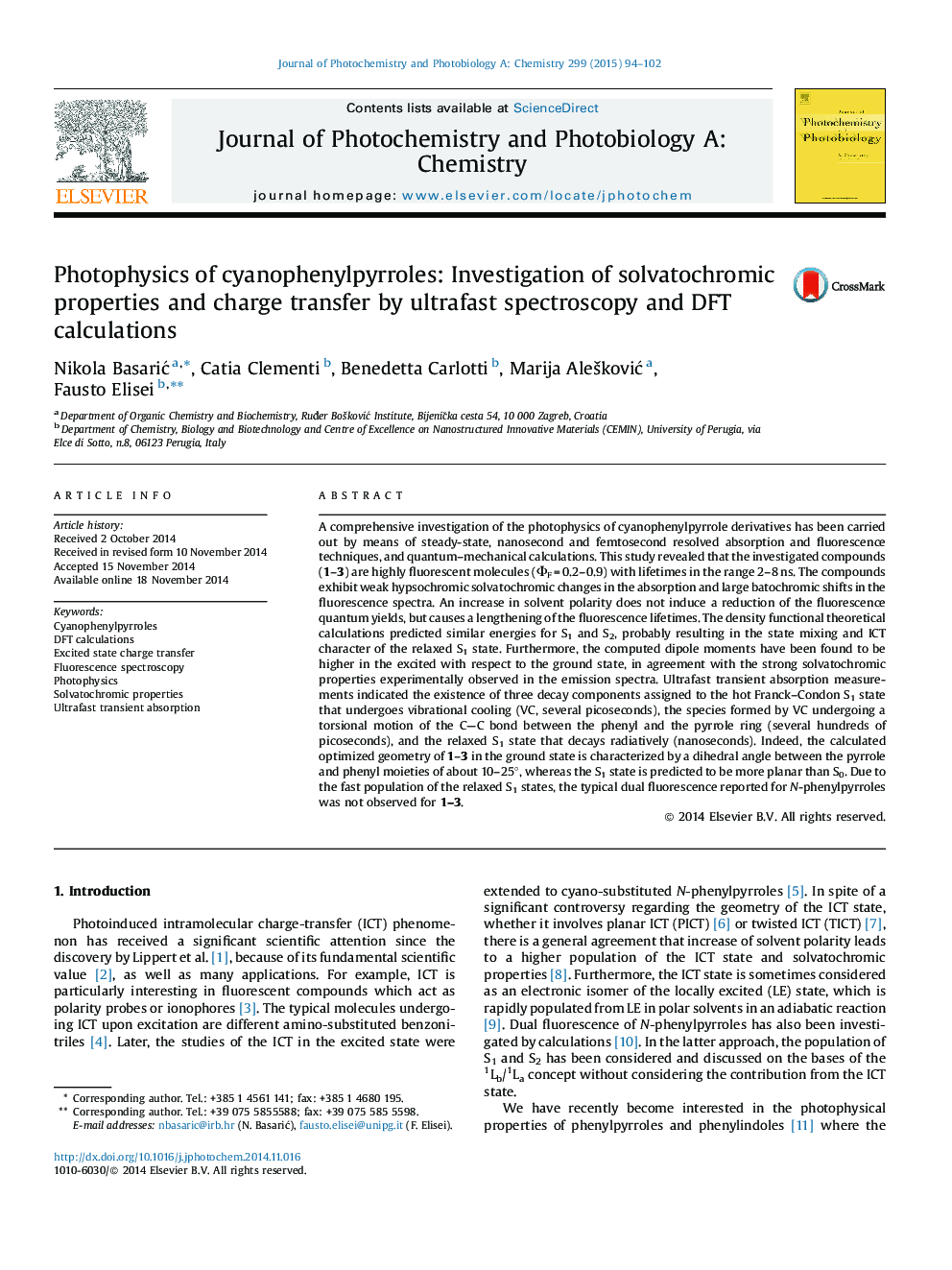| کد مقاله | کد نشریه | سال انتشار | مقاله انگلیسی | نسخه تمام متن |
|---|---|---|---|---|
| 26399 | 43950 | 2015 | 9 صفحه PDF | دانلود رایگان |

• Cyanophenylpyrroles 1–3 are highly fluorescent molecules (ΦF = 0.2–0.9).
• Cyanophenylpyrroles 1–3 exhibit weak solvatochromic changes in the absorption and large solvatochromic shifts in the fluorescence spectra.
• The experimental and theoretical investigation for 1–3 indicate that population of S1 leads to an enhancement of the electric dipole moment and significantly enhances the CT character of the relaxed S1 state.
• Ultrafast transient absorption measurements indicated the existence of three decay components, but due to the fast population of the relaxed S1 state, the typical dual fluorescence reported for N-phenylpyrroles cannot be observed for 1–3.
A comprehensive investigation of the photophysics of cyanophenylpyrrole derivatives has been carried out by means of steady-state, nanosecond and femtosecond resolved absorption and fluorescence techniques, and quantum–mechanical calculations. This study revealed that the investigated compounds (1–3) are highly fluorescent molecules (ΦF = 0.2–0.9) with lifetimes in the range 2–8 ns. The compounds exhibit weak hypsochromic solvatochromic changes in the absorption and large batochromic shifts in the fluorescence spectra. An increase in solvent polarity does not induce a reduction of the fluorescence quantum yields, but causes a lengthening of the fluorescence lifetimes. The density functional theoretical calculations predicted similar energies for S1 and S2, probably resulting in the state mixing and ICT character of the relaxed S1 state. Furthermore, the computed dipole moments have been found to be higher in the excited with respect to the ground state, in agreement with the strong solvatochromic properties experimentally observed in the emission spectra. Ultrafast transient absorption measurements indicated the existence of three decay components assigned to the hot Franck–Condon S1 state that undergoes vibrational cooling (VC, several picoseconds), the species formed by VC undergoing a torsional motion of the CC bond between the phenyl and the pyrrole ring (several hundreds of picoseconds), and the relaxed S1 state that decays radiatively (nanoseconds). Indeed, the calculated optimized geometry of 1–3 in the ground state is characterized by a dihedral angle between the pyrrole and phenyl moieties of about 10–25°, whereas the S1 state is predicted to be more planar than S0. Due to the fast population of the relaxed S1 states, the typical dual fluorescence reported for N-phenylpyrroles was not observed for 1–3.
Figure optionsDownload as PowerPoint slide
Journal: Journal of Photochemistry and Photobiology A: Chemistry - Volume 299, 15 February 2015, Pages 94–102